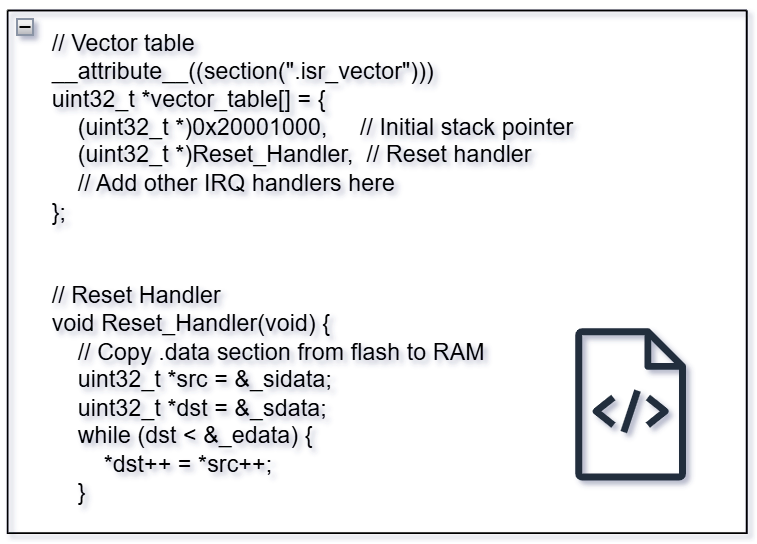What is Startup Code? | Beginner-Friendly Guide
Startup code is a small but essential piece of code that runs before your main program starts. It prepares your system so that your program can run smoothly. This is especially important in embedded systems and low-level programming.
Simple Definition 🧠 :
Startup code is the very first code that executes when a device is powered on or reset. It sets up the environment so that the
main()function can run properly.
Why is Startup Code Important?
Think of startup code as a stage crew in a play. Before the actors come on stage, the crew sets the lighting, positions the props, and makes sure everything is ready. Similarly, startup code:
- Sets up memory sections like
.data,.bss, and stack - Initializes hardware components if needed
- Calls constructors (in C++)
- Finally, it jumps to the
main()function
What Does Startup Code Typically Do?
- Set the Stack Pointer
Sets the stack to a known location in RAM. - Initialize Data Section
Copies initialized global variables from Flash to RAM. - Zero out the BSS Section
Sets all uninitialized global and static variables to zero. - Call System Initialization Code
Optional hardware-specific setup. - Call
main()Function
After everything is set up, control is passed to your program’smain()function.
Where is Startup Code Found?
- In embedded systems, startup code is usually written in assembly or C.
- It is provided by the compiler toolchain (like GCC, Keil, etc.) or custom-written for a specific microcontroller.
Conclusion
Startup code may not be visible when writing high-level programs, but it plays a crucial role behind the scenes. Especially in embedded development, understanding how startup code works can help you debug issues, customize behavior, and build better systems.
u can also Visit other tutorials of Embedded Prep
- What is eMMC (Embedded MultiMediaCard) memory ?
- Top 30+ I2C Interview Questions
- Bit Manipulation Interview Questions
- Structure and Union in c
- Little Endian vs. Big Endian: A Complete Guide
- Merge sort algorithm
Special thanks to @embedded-prep for contributing to this article on Embedded Prep


Leave a Reply